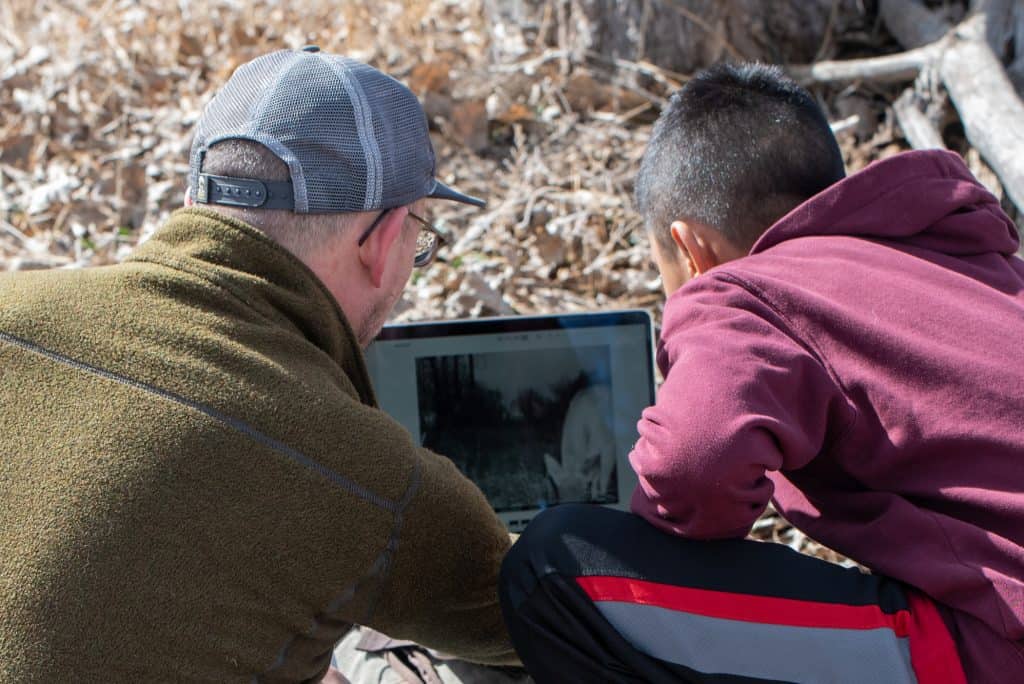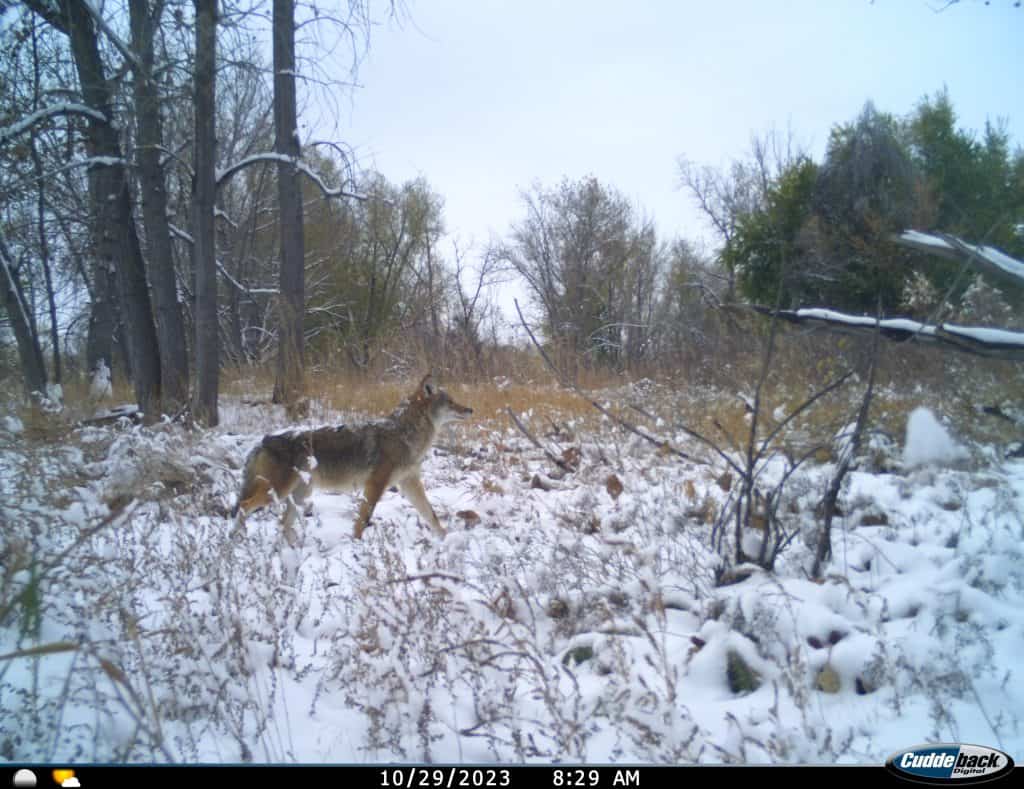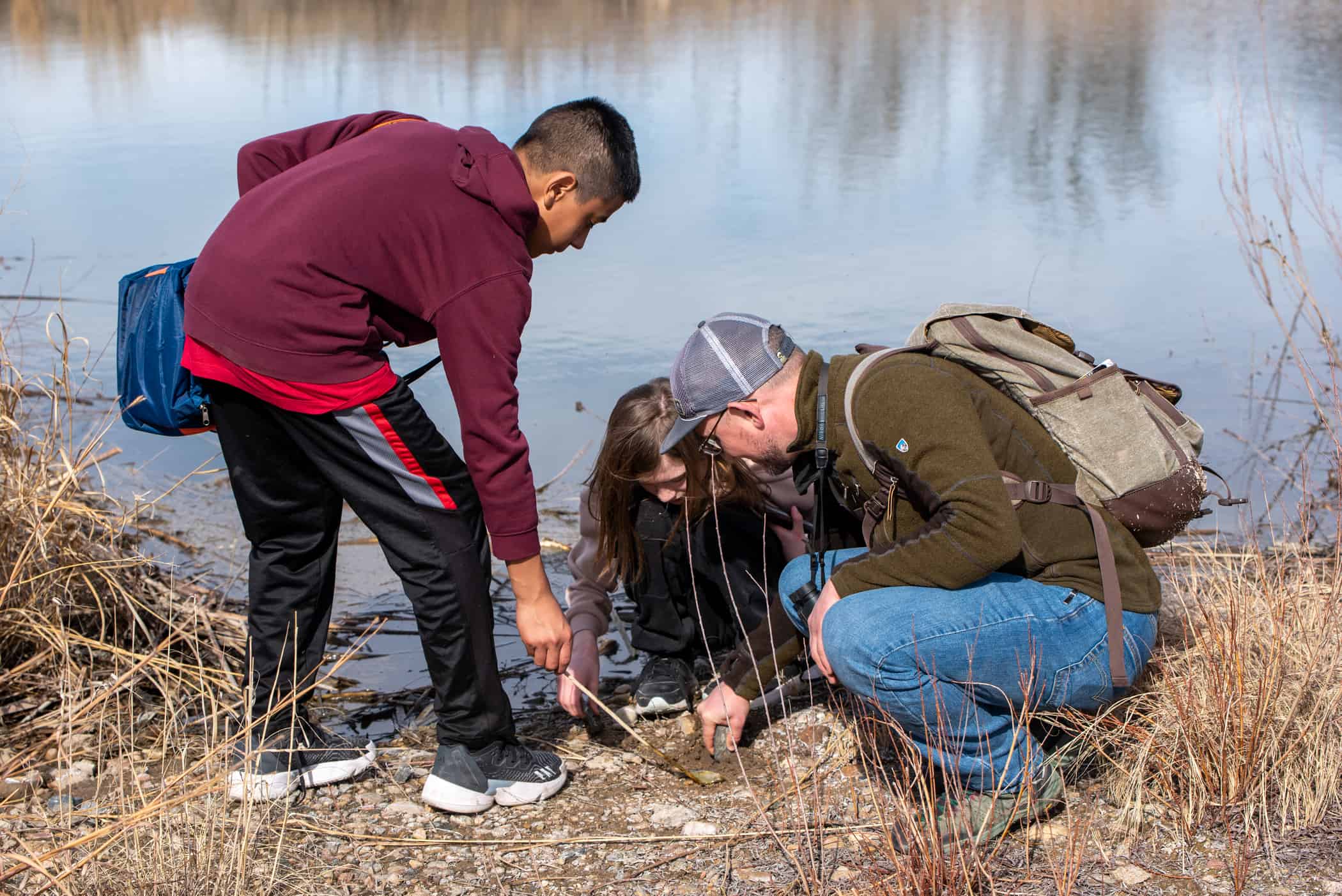At Longs Peak Middle School, students in the Wildlife Rangers Club participate in exciting adventures to explore various animal habitats in Colorado. Guided by eighth-grade Math and Science Teacher Andrew Freeman, club members monitor and maintain remote cameras on City of Longmont and Boulder County Parks and Open Space (BCPOS) property and share their discoveries with Park Rangers and Wildlife Biologists.
“Wildlife Rangers engage in citizen science, specifically by recording video and images of urban and rural wildlife and how they are affected by human activity,” Freeman explained. “We have two cameras at Rabbit Mountain for BCPOS that monitor off-trail use and help county wildlife biologists make decisions about the trail system. A third camera at Sandstone Ranch in Longmont is used to monitor the health of the riparian ecosystem post-flood. Our fourth camera was recently placed at Lykins Gulch near Golden Ponds to collect preliminary biodiversity data for city wildlife biologists.”
According to Freeman, the club plans to seek additional nature opportunities, either through the City of Longmont, Boulder County, or larger organizations. “In February, we attended the Bald Eagle Festival at Barr Lake State Park. Students got to see a live Bald Eagle presentation, collaborate with park rangers, and apply their understanding of nature to a new location.”
One Saturday per month, the club embarks on a three-hour field trip to replace camera batteries and download images from SD cards. “It’s really fun; you can discover new things, go hiking, and you get to see what types of animals are recorded,” shared sixth-grader Nick Stretch. Students also use nature signs, such as game trails, scats, and clearings, to make decisions about where to set up the cameras. “Initially, these excursions took place after school, but we didn’t have adequate time for everything in the winter,” said Freeman. “Going on Saturdays allows us plenty of room for equipment upkeep, downloading images, and exploring local natural areas. Many of the students that join Wildlife Rangers go on their first-ever hikes during these trips.”

Students always encounter interesting sights and sounds. “Keen eyes and ears pick up animals such as mule deer, white-tailed deer, Great Horned Owls, Bald and Golden Eagles, frogs, and even muskrats,” shared Freeman. “Last year, a student discovered a white-tailed deer carcass. We spent several months tracking its decomposition and movement as various organisms scavenged the remaining material. If we don’t see an animal itself, we usually see signs of it. This could mean tracks, scat, broken branches, or potential shelters.”
Sixth-grader Marley Brooks recalled, “One time we were walking around and we found a bunch of animal bones, which was really cool because I have a passion for nature and wildlife. I like getting to see and experience a lot of new things.”
The Wildlife Rangers Club meets the day before camera trips, which allows them to analyze the photos, make arrangements for the following day, and take care of club business. Students work in pairs to organize the image data according to monthly sightings. One partner identifies the species and quantity, while the other records the information in a Google Sheet. The data is converted into various charts to visually represent the frequency of species sightings. “Nature is a lot more interesting if you explore it more. I’ve learned a lot about animals, which is pretty cool,” shared sixth-grader Evangeline Hunt.
To communicate their findings with Park Rangers and Wildlife Biologists, students create presentations consisting of data, charts, and their favorite images from the collection year to share with BCPOS and City of Longmont staff. “In years past, we have been invited to give these presentations at the BCPOS offices,” said Freeman. “We also have a Twitter/X account to share surprising or rare image findings along with information about the highlighted species.”

The City of Longmont utilizes the data collected by the Wildlife Rangers Club in a variety of ways, such as identifying the different species represented in a habitat, analyzing animal activity patterns, and documenting the impacts of humans and dogs on local wildlife. The city also monitors ecological changes and phenology to track the arrival and departure of species, as well as their interactions. Overall, the data helps demonstrate the importance of protected properties for wildlife.
Additionally, BCPOS utilizes the club’s data to aid in further landscape analysis. When the information provided by the Wildlife Rangers Club highlights key species, times, or occurrences, recommendations regarding potential trails are made. If and when the observations of BCPOS and students, along with other gathered data indicate that avoidance is necessary for a proposed trail, a closure may be suggested.




